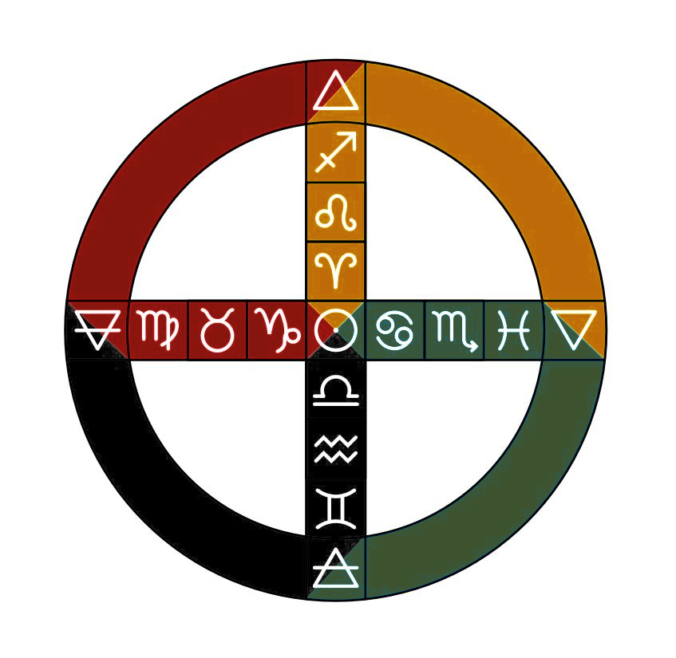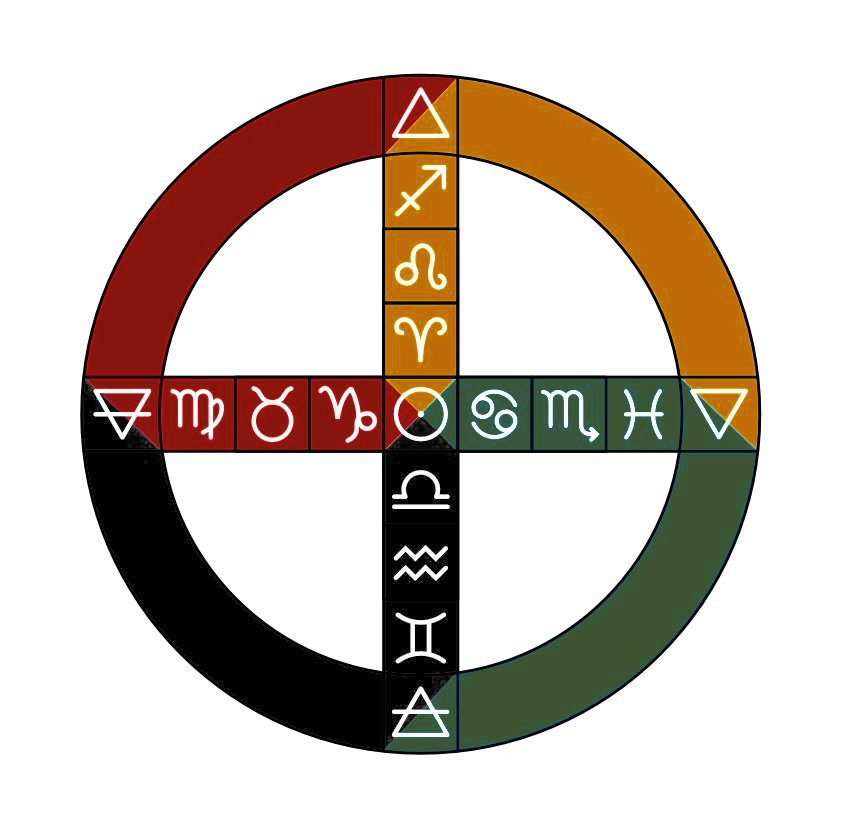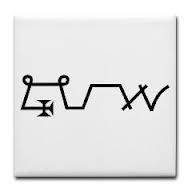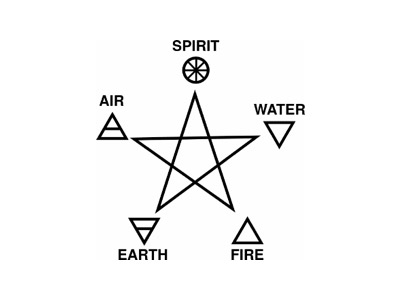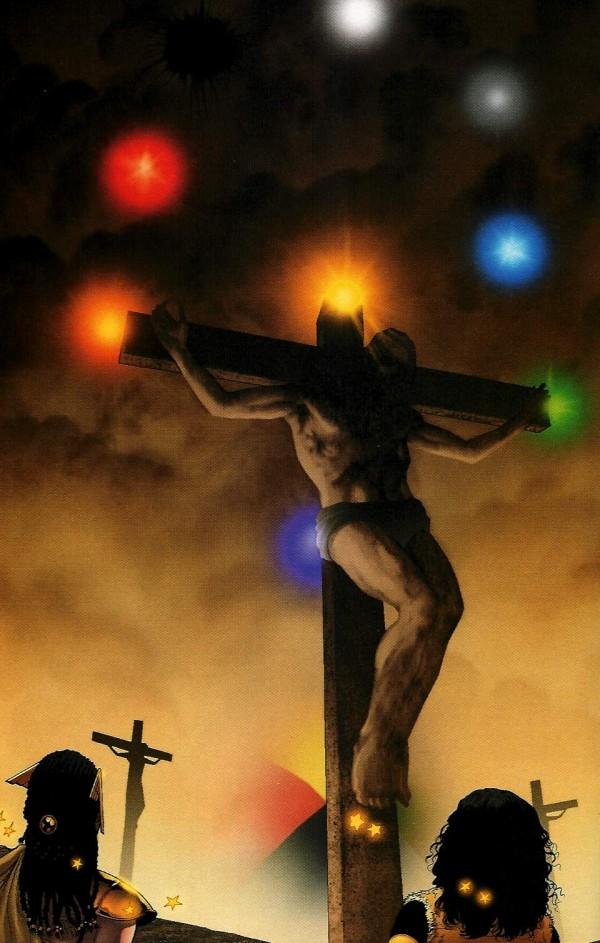As I mentioned in my previous post introducing my LBRP theory video, the content is dense enough that I wanted to break it out into a separate and more digestible post. I’ll largely follow a Q&A format here. If you have any additional questions I don’t cover, please don’t hesitate to leave a comment or email me!
Q: Where did the LBRP originate?
The LBRP was created by the founders of the Order of the Golden Dawn, and does not appear in the Cypher Manuscript. It was likely created based on several different sources.
While one may be forgiven for thinking that the Qabalistic Cross is simply a portion of the Lord’s Prayer badly translated into Hebrew, this is in fact not the case. While the Qabalistic Cross does bear a structural similarity, the semantic meaning is different in some small but important ways. Most notably, what you’re actually saying here in translation is “thou art the Kingdom and the Power and the Greatness forever, amen”.
This portion of the LBRP likely comes directly from Eliphas Levi, in his chapter on the “Conjuration of the Four” from Dogme et Rituel de la Haute Magie, translated into English by A. E. Waite as Transcendental Magic. The Conjuration of the Four itself calls upon the four elemental creatures—the salamanders, sylphs, gnomes, and undines—rather than the four Archangels, and does so in all four directions. By contrast, the invocation of the four Archangels in the LBRP is likely taken from the Hirsch Siddur, a traditional Jewish bedtime prayer, in which the following line occurs: “In the Name of God, the God of Yisrael: may Michael be at my right hand, Gabriel at my left, Uriel before me, Raphael behind me, and above my head, the presence of God.”
Q: What is the purpose of the Sign of the Enterer and the Sign of Silence in the LBRP?
These are the Neophyte grade signs of the Golden Dawn, and have further use in the ritual of the LBRP itself. The Sign of the Enterer, also called the Projecting Sign or the Sign of Horus, functions to project energy outward. When paired with the divine name appropriate to the quarter, you are infusing and inflaming that pentagram with the divine name. The Sign of Silence which answers it, also called the Sign of Harpocrates, is used to withdraw and contain the current of energy that is expelled by the Sign of the Enterer. So if for whatever reason after projecting with the Sign of the Enterer you feel fatigued or drained, make the Sign of Silence again and stand in that position to regain your equilibrium before proceeding. Much of the “troubleshooting” involved in the energetic portions of the LBRP focuses on balancing these two signs to ensure that you are not expending or depleting your own energy while performing the ceremony, and correct use of these Signs is key to maintaining that balance.
Q: Why is movement around the circle in the LBRP performed clockwise?
The direction of progression around the circle is clockwise, because movement in a Golden Dawn temple is always performed according to the sun (i.e. clockwise), with only one notable exception. This exception is during the Mystic Reverse Circumambulation, which is designed to release the current of energy built up by the movement of the Kerux and the other officers around the Hall in the Mystic Circumambulation symbolic of the rise of light and the decrease of darkness. Otherwise, as a system which focuses predominately on attaining and cultivating the state of harmony reached in the solar sphere of Tiphereth, motion around the circle will always be clockwise in direction.
Q: What does the phrase “in the column shines the Six-Rayed Star” mean?
This is without a doubt one of the most unwieldy phrases in the entirety of the LBRP. Remember that the LBRP is a microcosmic ritual, and as such the practitioner is standing in the sphere of Malkuth. As a result, Tiphereth is positioned directly above the practitioner’s head, along with the other Sephiroth of the Middle Pillar. This phrase alludes to the six-rayed hexagram of Tiphereth, the sixth Sephirah, and its position above one’s head in the orientation of the action within the ritual as well as representing the sphere of equilibrium to which one is aspiring as one works toward the attainment of the Adeptus Minor grade.
Q: Why are the elements attributed to the quarters they are in the LBRP, rather than following the more common grimoiric directional attributions (which have Fire in the East, Earth in the South, etc.)?
As Alex Sumner has done an excellent job of articulating in a blog post on the subject, the “Four Winds” directional attributions which the Golden Dawn uses for microcosmic rituals such as the LBRP derives ultimately from Ptolemaic astrology, specifically from the Tetrabiblos. This scheme assigns the four winds—Eurus, Notus, Zephyrus, and Boreas—to the cardinal directions we’re familiar with in the ordering of the LBRP. The more grimoire-standard ordering of Fire in the East, Earth in the South, Air in the West, and Water in the North is preserved in the Golden Dawn’s macrocosmic rituals.
Q: Why are the pentagrams traced clockwise in the LBRP, rather than counterclockwise? Shouldn’t banishing be performed widdershins?
In order to understand why the LBRP’s pentagrams are traced clockwise, you have to gain some understanding of the larger Adept-level Pentagram Ritual within the Golden Dawn tradition. The four elements crowned by Spirit are arrayed around the figure of the Pentagram as follows:
While there is some problematic history here regarding the Pentagrammaton, I will not go into it here: for further information on that front, watch the video, in which I briefly digress into the history of the Pentagrammaton and the ordering of the letters around the Pentagram. Suffice it to say that this diagram did not originate with the Golden Dawn, but represents the key to understanding the Pentagram Ritual.
While we are used to the trope of “invoking = deosil/clockwise” and “banishing = widdershins/counterclockwise” in modern occulture, this isn’t how it’s done in the Pentagram Ritual. Here, it isn’t whether you’re moving clockwise or counterclockwise that determines whether you’re invoking or banishing; it’s whether you’re moving towards or away from the element you’re working with.
In the LBRP, you start and finish with the Earth vertex of the Pentagram. Earth is used here as a substitute or stand-in for a general banishing, as it is the heaviest and densest element. You can see this same logic behind the use of the Saturn Hexagram as a general banishing figure within the Lesser Banishing Ritual of the Hexagram.
So far, so good. Things get complicated, however, by the fact that the lower “X” of the Pentagram—the paths joining Fire/Air and Water/Earth—are reserved for the element of Spirit or Quintessence, as those two paths connect and unite the active and passive elements respectively. Consequently, these two paths are unavailable for use in drawing an Earth banishing pentagram. In the LBRP, you start at the Earth vertex and move away from it to banish. Because you can’t use the path of Spirit Passive to do this, however, you use the path between Earth and Spirit instead, tracing the figure the only way you can—which is clockwise.
Now, note however that when you perform the LBRP, you are NOT banishing the element of Earth! The LBRP is a general banishing ritual that works on the microcosmic level—that is to say, the elemental and terrestrial realm. Remember that Earth here is just used as a shorthand or signature for the overall operation, and is used as a stand-in because it’s the heaviest and densest element. But again, it’s not an Earth banishing or even a specifically elemental ritual when you’re talking about the LBRP.
Because of the symbolism of the pentagram and its connection to Gevurah (or Geburah), it may be more accurate to say that the LBRP is a Gevuric ritual than an elemental one, insofar as it operates in the same manner that tracing a protective magic circle on the ground with a sword does in the grimoiric tradition—especially when the LBRP is performed using the Sword of the Hiereus or the Magic Sword of an Adept.
